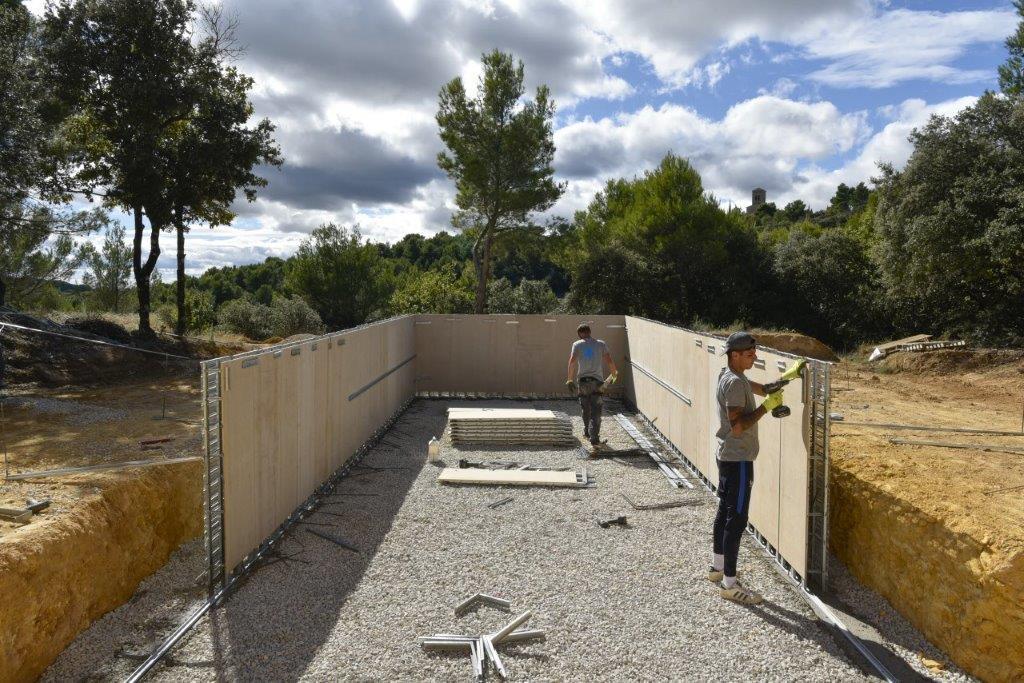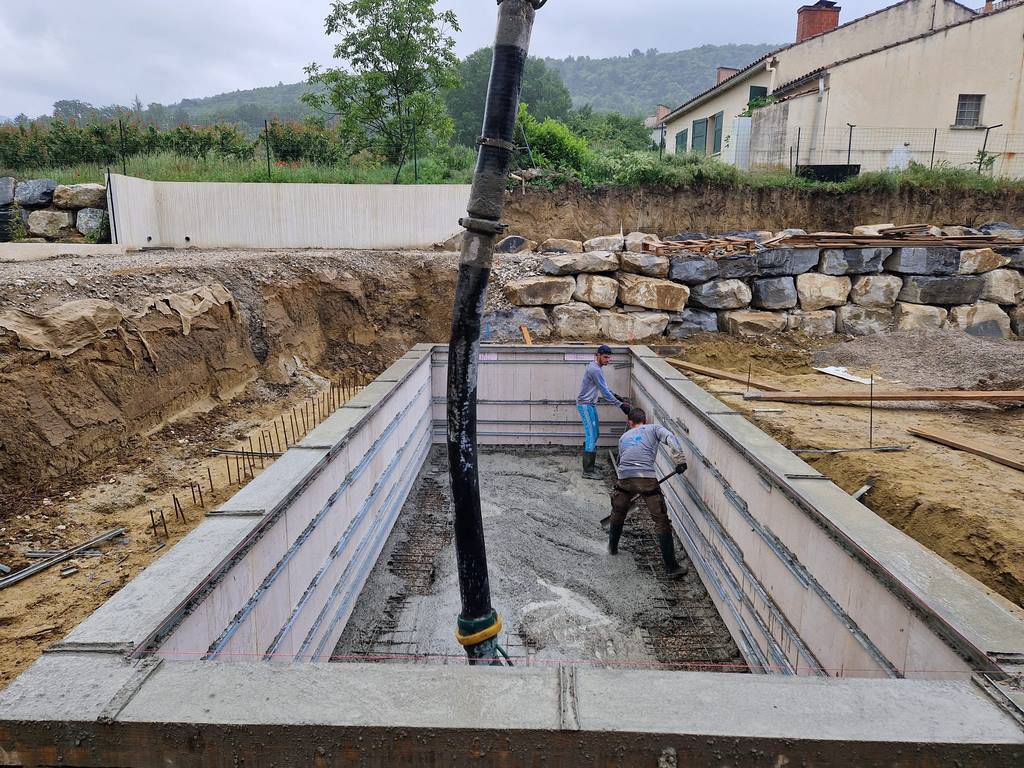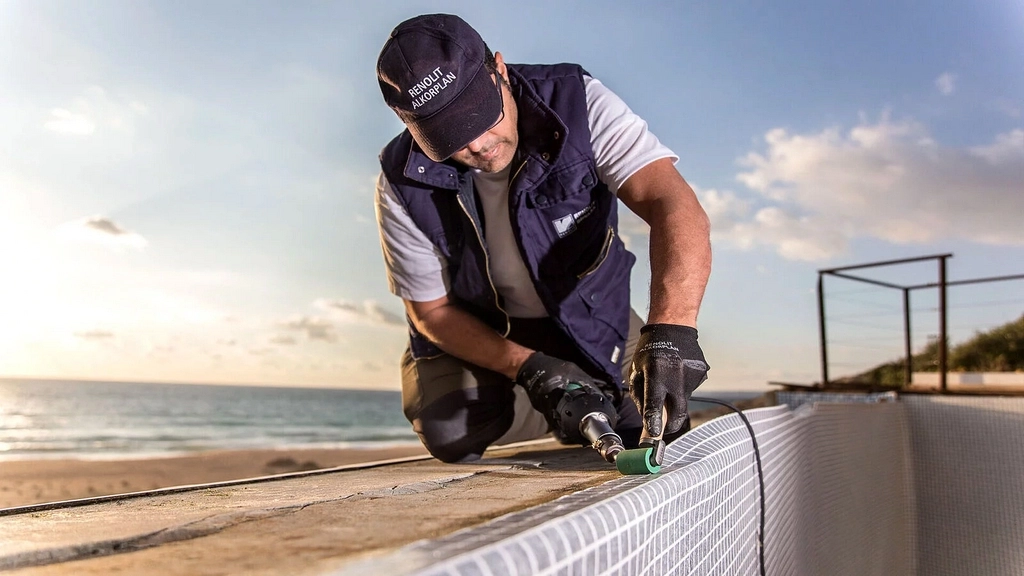Shuttered Reinforced Concrete
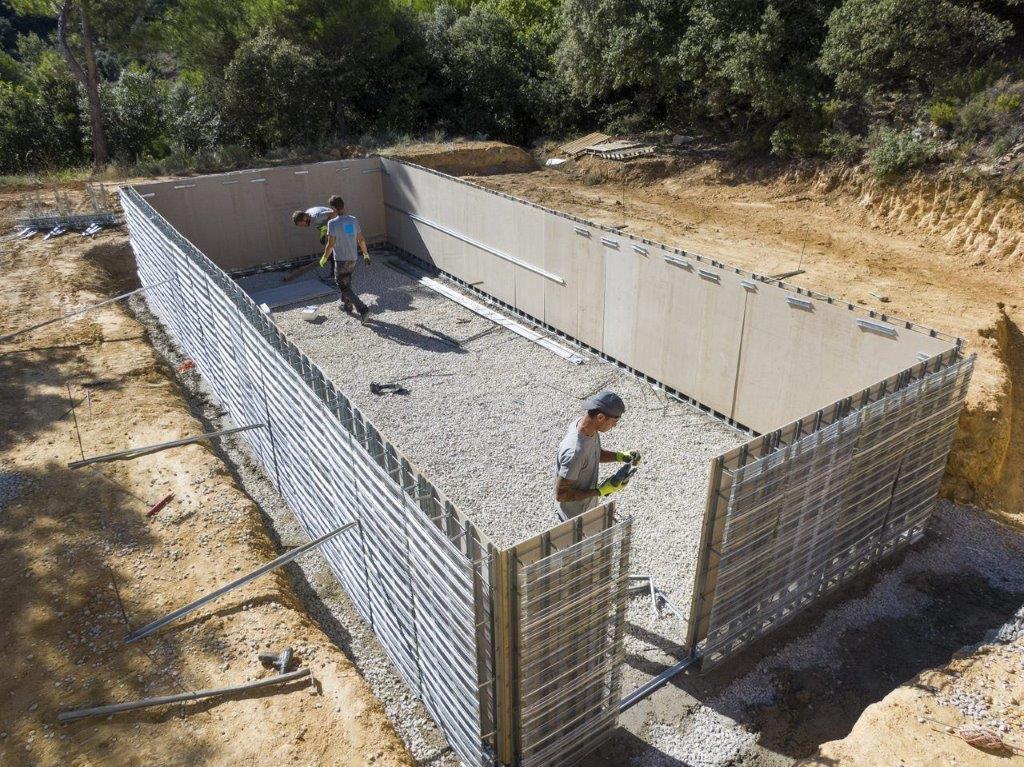
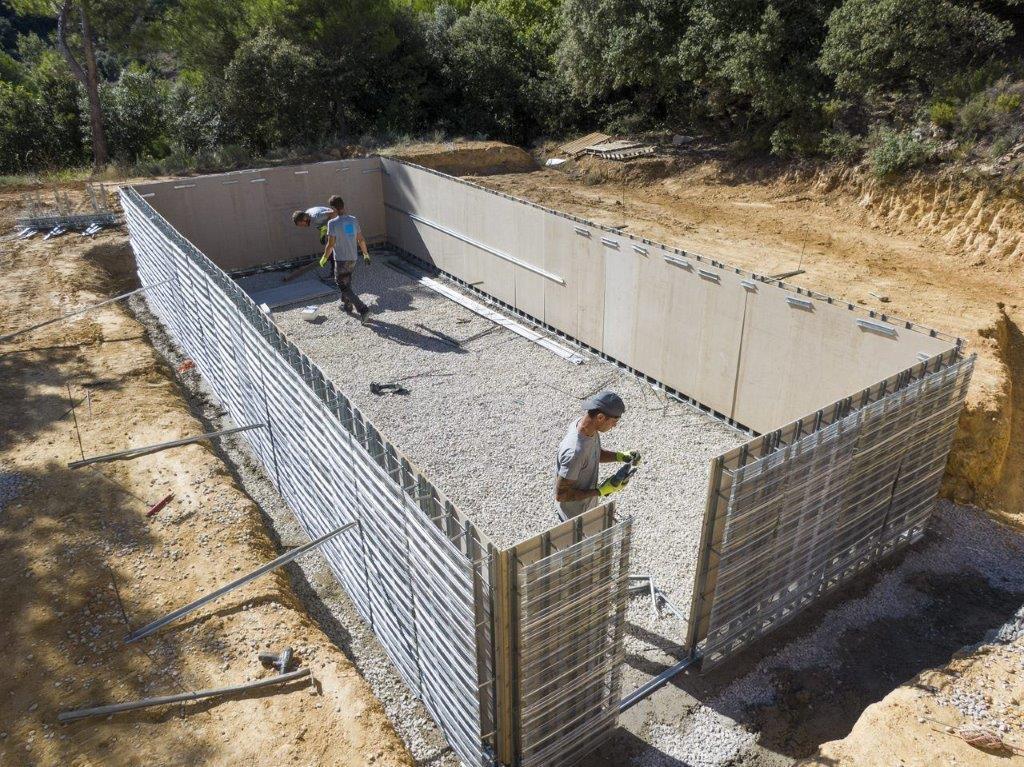
Civil engineer, Jerome Licata was interested in having a swimming pool installed at his home when he decided to try something new. He found a stay-in-place formwork system as a convenient way to create a concrete-reinforced pool structure.
By Jerome Licata
It all started because I wanted to build a swimming pool. When I heard about the lead times and the cost associated with traditional shotcrete construction, I knew there had to be another option, largely because pools are much more affordable and built faster in Europe.
This was after COVID at a time when I was also looking for a new business opportunity and discovered that a stay-in-place forming system was being used in Canada and Europe to build swimming pools, but was not being distributed and sold in the US.
After doing some research, I learned the system was structurally superior, and was a proven pool construction system. I was, however, surprised when I contacted the manufacturer in Europe to discover that the system wasn’t available in the US, so I decided I should be the one to start bringing the system to US builders.
I knew the timing was right, knowing that US pool builders are actively looking for newer systems that allow pool builders to build more, faster, with less labor that give builders greater control of their construction timelines. Having worked in the world of industrial concrete construction for many years and being comfortable with the properties and strength of concrete.
After researching various European, concrete pool building systems, I connected with Marinal, a French manufacturer of a stay-in-place, integrated, structural forming system for building that is widely used. We were soon established as the exclusive supplier of this system to pool builders in the US.
A CONCRETE CONCEPT
Shuttered reinforced concrete is a technique used in civil engineering to build bridges, hydraulic dams, apartment buildings and so much more. This same shuttered-reinforced concrete system was adapted in Europe for the use in pool construction where it has been used for many years to build thousands of pools.
The method has become popular because the formwork panels are easy-to-carry, lightweight and made of galvanized steel that remains integrated into the pool wall and floor structure and help reinforce the concrete.
This system is made of two framed panels with hinge connectors that allow the formwork to be folded. The system is widely used to build one-piece shuttered reinforced concrete structures like swimming pools, retaining and garden walls.
It’s a one-time use forming system that becomes part of the pool structure. The pool interior can be finished with a variety of materials, but we’ve found that the reinforced PVC membrane is most often used in Europe and is the waterproofing interior solution that is recommended to builders.
The PVC membrane is also a proven solution that has been used for decades in residential pools in Europe and widely used for commercial applications in North America. The membrane is welded onsite as soon as the one-piece concrete form is complete. This gives builders maximum control of their construction schedule and a thick pool interior that is long-lasting, completely watertight and attractive.
A ‘MONOBLOC’ STRUCTURE
The system was originally created for building earthquake resistant, multi-level residential houses, reason being the formwork itself is inherently reinforced shell that is completely interconnected, creating what we call a “monobloc” structure.
Once the forms are installed, the concrete is poured between the two panels, where it remains perfectly contained in the formwork. The poured concrete can be checked visually from top to bottom because of the way the formwork is designed. The formwork remains integrated and acts as reinforcement, thus requiring fewer pieces of reinforcing rebar. The concrete of the walls and of the bottom slab is poured simultaneously, creating a one-piece joint-less structure.
This means that pools made with this system, reinforced, one-piece concrete, have no weak points and there is no risk that the seal will be compromised. One-piece concrete construction offers the greatest reliability in terms of robustness and longevity for a pool.
The panels include with vertical stiffeners that also act as an anti-cracking mesh. The seals between the parts are all embedded in the concrete. The system allows the excess water to be removed gradually throughout the pouring process. Additionally, the concrete “fill-level” in the panels is controlled visually by the installer because the mesh system allows builders to see the concrete as it’s being poured into the formwork.
Thanks to the one-piece construction technique, any size and shape pool can be built. Rectangles, free-form shapes, contemporary designs, lap pools, infinity pools, and even above-ground or semi-inground pools.
In fact, this system is well suited for challenging terrain, including anti-seismic applications.
SNAP IN PLACE
The forms come folded and are very compact so much so, that an entire pool can easily fit in the back of a pick up truck. For example, a 20-foot-by-30-foot pool—will fit on the back of a pickup truck or a flat bed trailer sitting on just 1-2 pallets. Builders open the forms on the job site and set up a perimeter of the pool.
The installation is reminiscent of a Lego system as there is a railing system that outlines the perimeter of the pool and the panels are screwed into the railing system to ensure they are flush and level.
When builders start pouring the concrete, it’s best to fill about half way up the wall and then vibrate the concrete. During this process, the concrete will ‘seep out’ at the bottom of the wall/formwork—creating a ‘wet-wet’ connection between the slab (floor) and the wall. The pool floor is cast once the walls are fully filled with concrete.
Shotcrete builders are quickly finding is system beneficial to their businesses. In my view, the swimming pool industry continues to suffer from a labor-shortage and shotcrete is very labor-intensive. This could be a viable alternative for those seeking an alternative construction method.
That’s why there was great interest this past year, especially as pool builders are looking for options that will allow them to have tighter control of their construction schedule. We showed the product both in Atlantic City and Las Vegas last season and are thrilled to report more and more builders are integrating this new system into their construction processes.
Jerome Licata a civil engineer with over 25 years of experience working specifically in concrete construction and repairs. He founded and sold Gomarsall (an industrial flat work company), before starting Manzarena and venturing into the concrete swimming pool business. He can be reached at [email protected] and will be exhibiting at the Pool & Spa Show in Atlantic City this January, 2024 at booth #1554.











